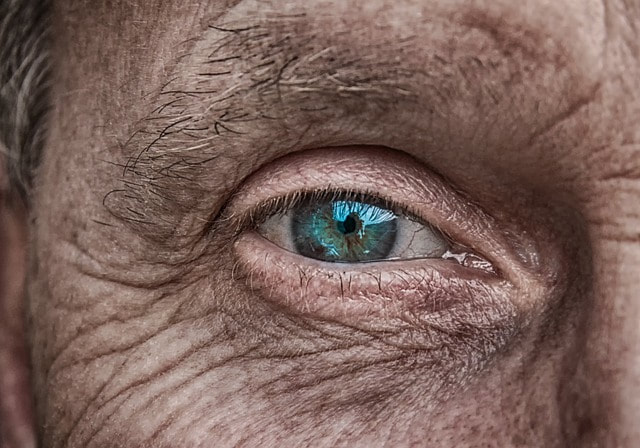What a Man's Eyes Can Reveal About His Overall Health & Other Health Conditions | Men's Health Month6/19/2018
Eye exams may do more than identify eye conditions though. They may also provide a clue to overall health. Many health conditions may cause certain changes in the eyes, which can be spotted through an eye exam. Below are some common conditions that may cause changes in the eyes. Diabetes & EyesDiabetes is a chronic disease that occurs when blood glucose levels are too high. The condition develops due to impaired insulin production by the pancreas. Diabetes can lead to serious health complications, including kidney disease, heart disease, and stroke. People with diabetes are also at an increased risk of eye problems. According to the National Institute of Diabetes and Digestive and Kidney Diseases, about 30 million people in the United States have diabetes. Although diabetes occurs about equally in men and women, there are some gender differences. In research published in Endocrine Reviews, men tend to be diagnosed with type 2 diabetes at a lower body mass index and age than women. Signs of Diabetes in the Eyes: If blood sugar gets too high, it can cause blood vessels in the eyes to become blocked and swell. The small vessels in the retina can burst and cause red spots in the eyes. High Cholesterol & EyesCholesterol is a waxy, fat-like substance that is found in the blood and cells throughout our body. Some cholesterol is needed in the body to build healthy cells. However, if cholesterol levels become too high, it can lead to plaque formation on the walls of the arteries and increase risk of heart disease. Unfortunately, high cholesterol is common. According to the Centers for Disease Control and Prevention, about 78 million adults in the United States have low-density lipoprotein (LDL cholesterol, also known as bad cholesterol) levels that put them at an increased risk of heart disease. Although both men and women should watch their cholesterol levels, men have heart disease at higher rates than women. As a man ages, it’s also common for his cholesterol to increase. Signs of High Cholesterol in the Eyes: Small, yellow deposits of lipids may form on the whites of the eyes. Yellowish bumps may also develop on the eyelids. In some people, signs of high cholesterol may also include the development of gray or white rings around the cornea. High Blood Pressure & EyesHigh blood pressure, also called hypertension, occurs when blood flows through the cardiovascular system at higher than normal pressures. High blood pressure is considered a risk factor for a stroke, heart disease, and kidney disease. It also increases a person’s chances of eye problems. In many instances, high blood pressure does not have any symptoms. In fact, many people do not even realize they have high blood pressure until a doctor tells them. Signs of High Blood Pressure in the Eyes: People who have high blood pressure may develop changes in the blood vessels in the retina. The vessels may hemorrhage, burst, or change appearance. For example, the arteries may narrow in the back of the eye. The vessels can also thicken. The arteries may also change in color from a normal red appearance to a coppery color. Multiple Sclerosis & EyesMultiple sclerosis is a chronic disease that affects the central nervous system and can cause a variety of symptoms, including muscle weakness, fatigue, and walking difficulties. While multiple sclerosis affects more women than men, there is an exception. A less common form of MS, primary progressive multiple sclerosis, affects men equally. Primary progressive MS affects 10 to 15 percent of people who have MS. Signs of Multiple Sclerosis in the Eyes: Multiple sclerosis can cause inflammation of the optic nerve, which can be identified through an eye exam. The inflammation of the optic nerve can interfere with central vision and cause symptoms including double or blurred vision. Detecting Men's Health Conditions Through the Eyes We all know the importance of having yearly physical exams (whether or not we get them). Regular, routine eye exams are just as important. Not only are they essential to maintaining eye health and vision, but also can they potentially help identify certain medical conditions in some cases.
Your eye doctor can detect changes in the eyes caused by diabetes, high cholesterol, high blood pressure, and MS, perhaps before you know they’re there or that you have a health concern. For example, your eye doctor can perform a test as part of a comprehensive eye exam that look at the blood vessels in the back of the eye. In some cases, people learn they have high blood pressure from their eye exam. We hope you found this information valuable. If you have any question about your eye health, you would like to schedule an appointment with one of our eye doctors, or you’re due for an eye exam, please call our office at 508-746-8600. Comments are closed.
|
EYE HEALTH BLOGCategories
All
Archives
July 2024
|
|
Kadrmas Eye Care New England
55 Commerce Way, Plymouth, MA 02360
14 Tobey Road, Wareham, MA 02571 133 Falmouth Road (Rt 28), Mashpee, MA 02649 |
Phone Number:
1-508-746-8600 Hours: Monday through Friday — 8 AM – 4:30 PM |


 RSS Feed
RSS Feed
